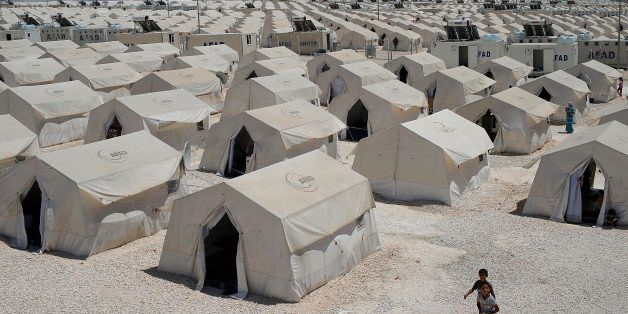
There are more displaced persons around the world than at any time since World War II. And while the world is much more capable than it was six decades ago, we are collectively failing to meet their essential needs with dignity. We can and must do better, governments and other donors alike. Failure to summon political commitment, resources, and innovative ideas will harm millions of children, who are the most vulnerable in any crisis, and result in lost generations in Syria and elsewhere, thus hampering nations' ability to accelerate their recovery.
Syria is Exhibit #1. During multiple visits to Jordan and Lebanon, I have seen both the scale of need and the size of the response. We are falling short. Last May the World Food Programme's (WFP) spokesperson, Joel Eid, said, "We are unable to look refugee fathers and mothers in the eye and tell them we don't know whether they will be getting assistance in June, July and August." But on July first, World Food Programme sent a text to 440,000 Syrian refugees, who are living in Jordan outside of camps, notifying them that WFP may not be able to provide food assistance in August. Imagine how a refugee family, who had exhausted their savings after more than four years in Jordan, took the news.
Although WFP was able to raise additional funding in the nick of time, it is only enough to cover the cost of reduced assistance to fewer people. Assistance programs that operate on a month-to-month basis wreak havoc on the well-being of refugees and the ability of international organizations to plan. They frustrate those working on the ground because they know the last-minute funding is only a short-term fix.
WFP's funding shortfalls are not for lack of effort. Since 2012, WFP has been operating an emergency program in Lebanon, Iraq, Turkey, Egypt and Jordan with robust support from the United States and other donors. Its plan includes a food voucher system for over 600,000 impoverished refugees as well as support to the National School Feeding Program for 350,000 schoolchildren. Despite these ambitious goals, WFP's Jordan programs remain chronically underfunded. Word of a potential cut in assistance came after the organization reduced the value of food benefits from $28 to $18 between January and March . WFP faces similar challenges in other countries that are affected by the Syrian refugee crisis, and has already cut the value of vouchers in Iraq and done the same twice in Lebanon. Refugees are forced to cope by skipping meals, reducing portions, or going into debt to supplement their rations .
When families are unable to buy food for children, they may turn to child labor or force their children to go to the street to beg. Save the Children found that close to half of Syrian refugee children in Jordan are the sole or joint breadwinners for their families. Meanwhile, in Lebanon, children as young as six are working . Save the Children found that refugee children in the states surrounding Syria are increasingly getting involved with criminal networks, being approached by recruiters from armed groups, and doing dangerous jobs for little pay to help make ends meet .
The World Food Programme's recurring challenges to close its funding gap are part of a larger crisis for the humanitarian community. In recent years, the number and length of humanitarian emergencies have increased, which has in turn lead to more people being displaced for longer periods of time. According to the Brookings Institute, the UN's annual appeal has increased from $7 to 16 billion dollars in the last four years alone and the average amount of time that people are displaced has increased from 9 to 20 years since the 1990s . Yet, the international community has been treating the crises with the same types of programs and funding mechanisms as before. Although technology has helped to cut the costs of aid delivery, it has not enabled us to keep pace with the rising tide of need. Business as usual will not address the real needs of millions of families who find themselves in protracted crisis through no fault of their own, nor will it enable neighboring countries to shoulder the burden of hosting refugees.
Humanitarian organizations, development agencies and national governments must come together before next May's World Humanitarian Summit in Istanbul to consider new approaches to meet these mushrooming basic needs on a more sustainable basis. How can we achieve greater benefit for displaced families from resources invested? From where can we mobilize additional resources? Are all nations shouldering their share of this global responsibility? What measures will enable host governments to extend social protection programs and take other steps to enable both refugees and their host communities to sustain themselves over the longer run? Should wealthier countries offer opportunities for resettlement, rather than neighboring countries shouldering the burden?
Surely a world that spends $60 billion a year on ice cream can find the additional billions of dollars needed to mitigate the suffering of millions of refugee families from Syria and elsewhere. As President Obama and other leaders come together in two months in New York for the UN General Assembly to adopt a new set of Sustainable Development Goals for the planet, they must not ignore the need to ensure the well-being of 60 million displaced people in Syria, Jordan, Lebanon, Iraq, South Sudan and elsewhere. We can and must come up with a smart, sustainable way to meet the needs of these most vulnerable children and families.